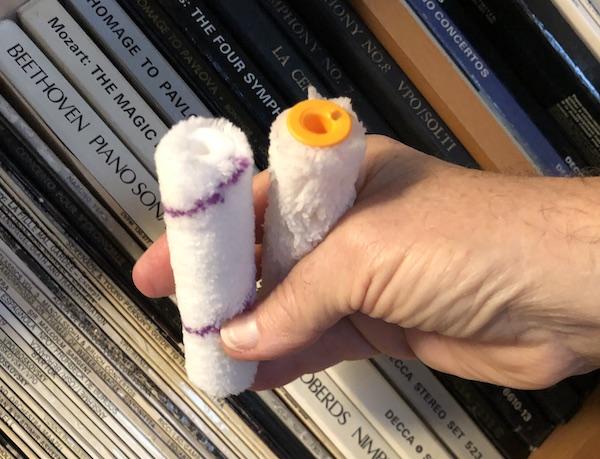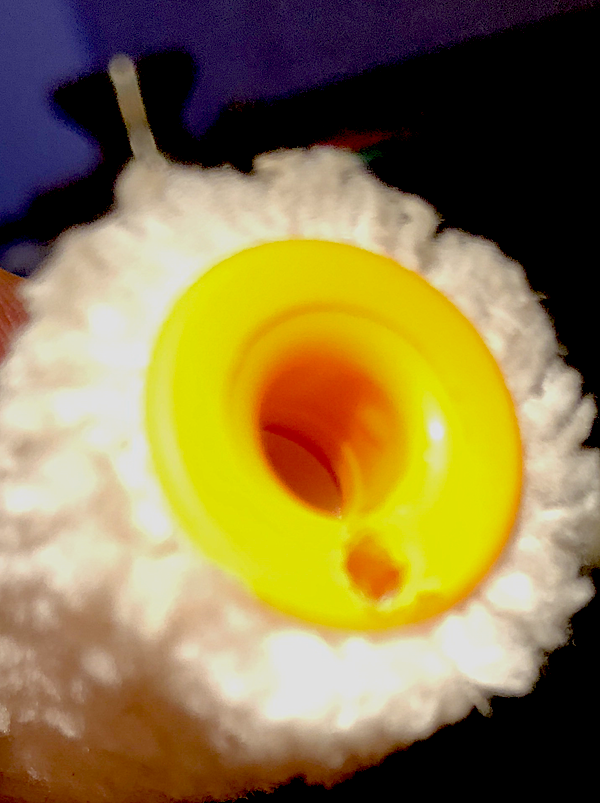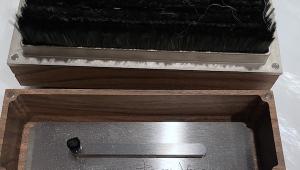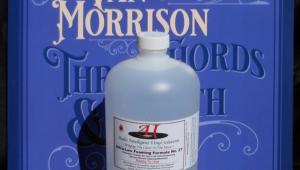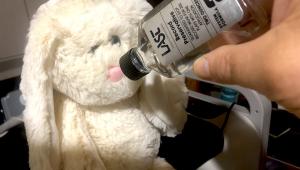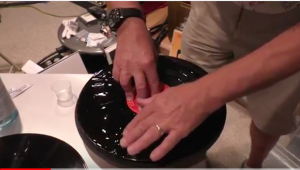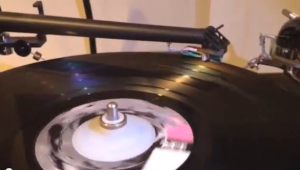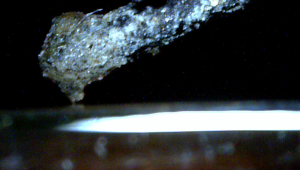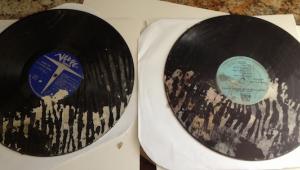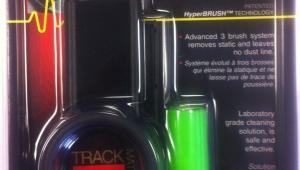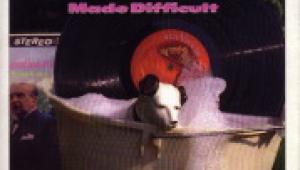What's the Difference Between These Two Mini-Rollers? (Actually More Than I Thought!!!!!!)
And the word "key" is a play on words. Yesterday, after successfully using the paint rollers in place of the costly ones from Audio Desk I wrote the story below. Today when I tried using the machine the rollers did not reliably spin despite being seated properly. The difference, as I just discovered, is a tiny ridge in the plastic insert that "spring loads" the roller's plastic innards to the Audio Desk shaft. Without it the fit is too loose and the microfiber roller can lift up once the water level rises, and then not spin.
So, while it's clear that the hole in the bottom of the roller has been drilled "after the fact", I'm not sure of the origin of the ridge you can see in this photo, nor can I think of a way to created one inside the plastic shaft. Without it, the fit is too loose:
So ignore everything below and for now it's spend $99.95, but that's an awfully costly ridge!
My apologies to all!
The other difference is the price: each roller in the Audio Desk $100 set of 4 costs $25.00. The rollers from Home Despot cost $2.64. Yes, you must drill the tiny hole yourself, but otherwise they appear to be identical and they work identically as well.
No wonder when I visit Audio Desk owners I more often than not find dirty, brown, rollers! I understand that someone has to drill the holes and the distributors like The Cable Company need a mark up to sell these things to you, but come on! I bought a 12 pack at Home Despot for $31.68 and took about five minutes to carefully drill out the holes.
I used an 1/8th inch drill bit and then gently reamed it slightly out. You must drill carefully and parallel to the roller (not at an angle) or the roller will wobble when it spins. It's also important to be sure that the hole is "flat" for the same reason.
The rollers look, feel and work identically to the $99.95 set of four because they are essentially the same thing! They are Premier brand 4"x1/4" NAP Mini Rollers, Home Despot store SKU #1002084729.
I bought a box of 12 for $31.68 and you can be sure I will be replacing the rollers more frequently!
P.S.: I don't think the colored stripe on the $2.64 roller will "come off" and pollute the record if that's what you're thinking. These are, after all, paint rollers!
I like the Audio Desk machine and use it routinely along with the Kirmuss machine for "restoration" purposes, but there's no reason for the rollers to cost $99.95, nor for that matter for the mini-bottle of surfactant/detergent to cost $25! But that's more difficult to analyze and deconstruct!
